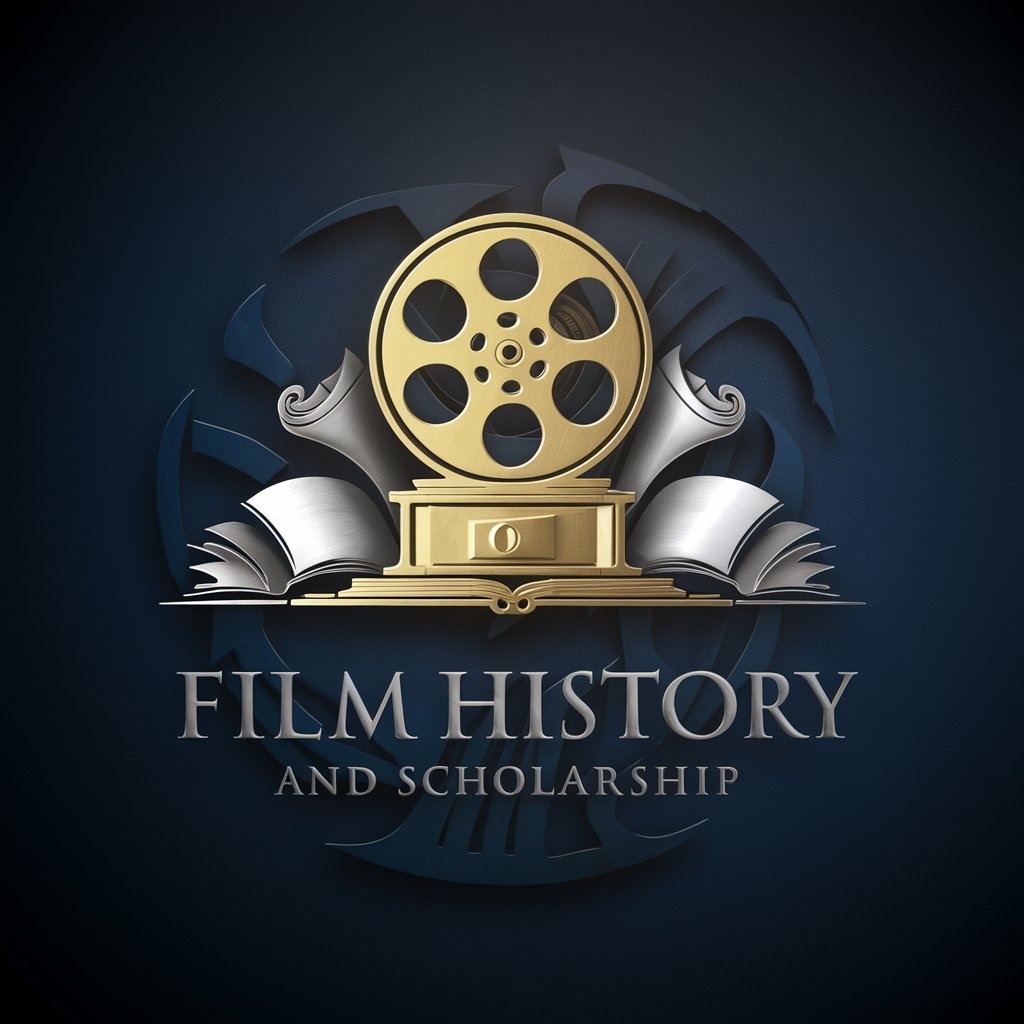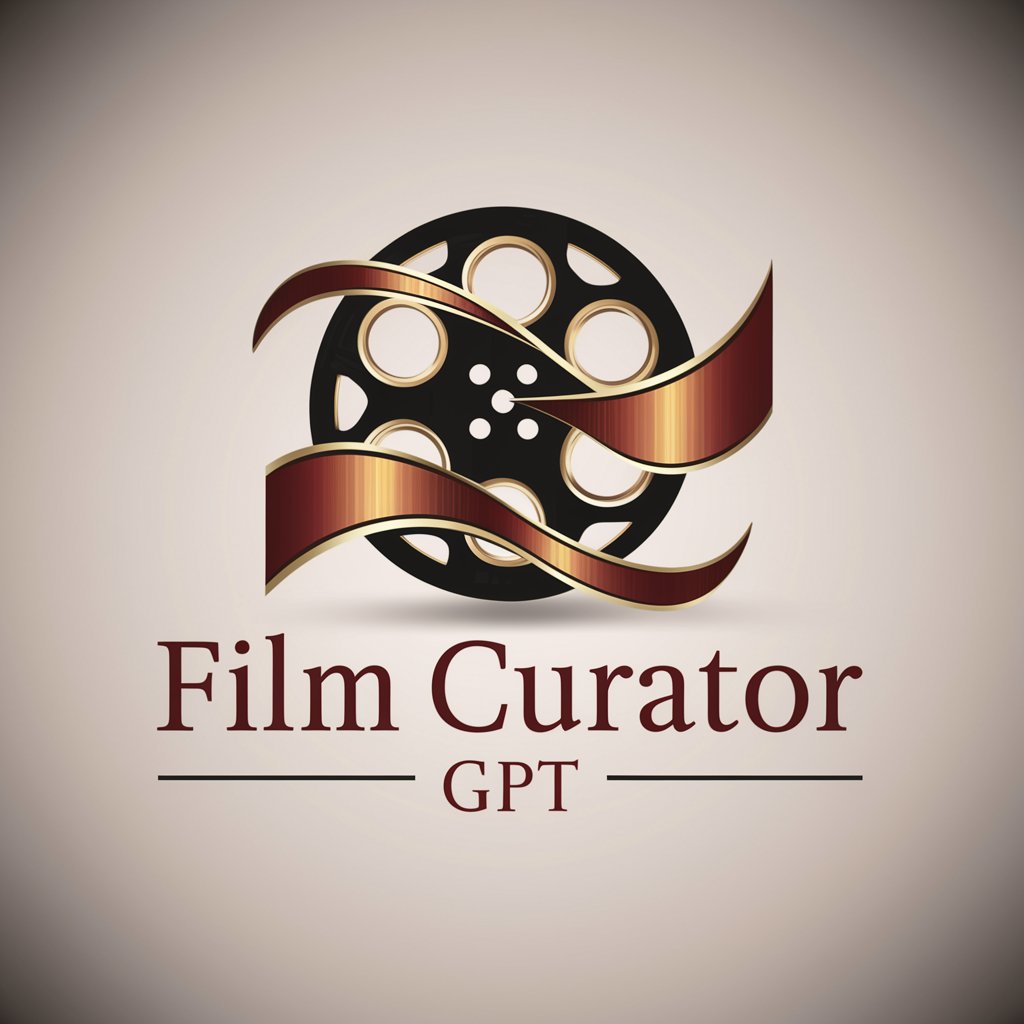
Film Historian - AI Cinema History Resource

Welcome! Let's explore the rich history of cinema together.
Explore Cinema History with AI
Discuss the significance of the silent era in the evolution of film techniques.
Explain the impact of the Golden Age of Hollywood on modern cinema.
Analyze the influence of European New Wave movements on global filmmaking.
Describe the role of sound in transforming cinematic storytelling.
Get Embed Code
Overview of Film Historian
Film Historian is a specialized AI designed to serve as an expert in the history of cinema. Its primary purpose is to provide deep, academic insights into the evolution of film, tracing developments from the silent era through to contemporary cinema. This includes analysis of technological advancements, shifts in narrative techniques, and the impact of cultural and economic factors on film production and reception. For example, Film Historian can detail the influence of German Expressionism on Hollywood noir, illustrating this with specific films and directors who bridged these styles, such as Fritz Lang with 'M' (1931) and later 'The Big Heat' (1953). Powered by ChatGPT-4o。

Key Functions of Film Historian
Educational Insight
Example
Explaining the transition from silent films to the talkies in the late 1920s, including the technological innovations like the Vitaphone system and its impact on films such as 'The Jazz Singer' (1927).
Scenario
Used in a classroom setting where film studies students are exploring the technical and cultural shifts of early 20th-century cinema.
Research Assistance
Example
Providing detailed analyses of the French New Wave, including key figures like Jean-Luc Godard and François Truffaut, and discussing seminal works like 'Breathless' (1960) and 'The 400 Blows' (1959).
Scenario
Assisting a researcher compiling a paper or book chapter on the influence of cinematic innovations introduced during the French New Wave on global filmmaking.
Contextualization of Cinematic Elements
Example
Explaining the use of deep focus in Orson Welles’ 'Citizen Kane' (1941) and its influence on narrative storytelling in film.
Scenario
Helping a film critic prepare a retrospective review of 'Citizen Kane' for its anniversary, highlighting its technical and narrative innovations.
Target Users of Film Historian
Film Students and Educators
This group benefits from Film Historian’s ability to provide comprehensive historical context, detailed analyses of film techniques, and discussions on the evolution of cinematic styles, useful for both learning and teaching.
Researchers and Academics
Academics researching cinema history, theory, or criticism can leverage Film Historian to obtain detailed explanations and insights into specific periods, directors, or movements, enhancing the quality and depth of their scholarly work.
Film Critics and Enthusiasts
Critics writing reviews or articles can use Film Historian to draw connections between films and cinematic traditions, while enthusiasts looking to deepen their understanding of film history and theory will find the AI’s insights enriching.

How to Use Film Historian
Begin Here
Visit yeschat.ai for a trial without requiring login or a ChatGPT Plus subscription.
Explore Features
Navigate to the Film Historian section to access resources and tools tailored for understanding cinema history.
Ask Questions
Utilize the query box to ask specific questions about film history, techniques, and cinematic movements.
Utilize Insights
Explore in-depth articles and analyses provided, which offer scholarly insights into different eras of cinema.
Review Responses
Read through the detailed, context-rich responses to enhance your understanding or aid in academic research.
Try other advanced and practical GPTs
Film Curator
Unveil Cinema Secrets with AI

Film Curator
Discover Movies Smartly

Film Guru
Unlocking Cinematic Secrets with AI

Film Recommender
Discover Movies with AI Precision

Film Finder
Your AI-powered movie matchmaker

Film Editor
Craft Stories with AI-powered Editing

Teacher Aide
Empowering Educators with AI

Lawyer's Aide
Revolutionizing Legal Work with AI

Academic Aide
Streamline Your Studies with AI

Architect's Aide
Elevate Design, Powered by AI

English Aide
Crafting Clear, Concise Thesis Statements

IB English Aide
Elevating IB English with AI

Detailed Q&A on Film Historian
What is the significance of the silent era in film history?
The silent era marked the birth of cinema and set foundational filmmaking techniques and narrative structures. It was during this period that filmmakers began to experiment with the language of cinema, exploring editing, camera movements, and visual storytelling that laid the groundwork for all subsequent cinematic developments.
How did the introduction of sound change cinema?
The advent of sound revolutionized cinema by adding a new layer to storytelling through dialogue, music, and sound effects. This transition not only changed the way films were produced and consumed but also led to the decline of the silent film era, ushering in new genres and stars.
What are key characteristics of French New Wave?
French New Wave is characterized by its rejection of traditional filmmaking conventions, use of innovative editing techniques, and a focus on younger, often non-professional, actors. Directors like Godard and Truffaut pushed the boundaries of visual style and narrative structure, influencing modern cinema profoundly.
How does Film Historian assist in academic research?
Film Historian offers detailed explorations of various cinema periods and techniques, providing users with contextual insights and scholarly content that can support academic research, paper writing, and enhanced understanding of film studies.
Can Film Historian help understand modern cinema?
Yes, by providing a historical perspective on the evolution of filmmaking techniques and narratives, Film Historian helps users appreciate and analyze contemporary films more deeply, understanding the influences and trends that shape modern cinema.